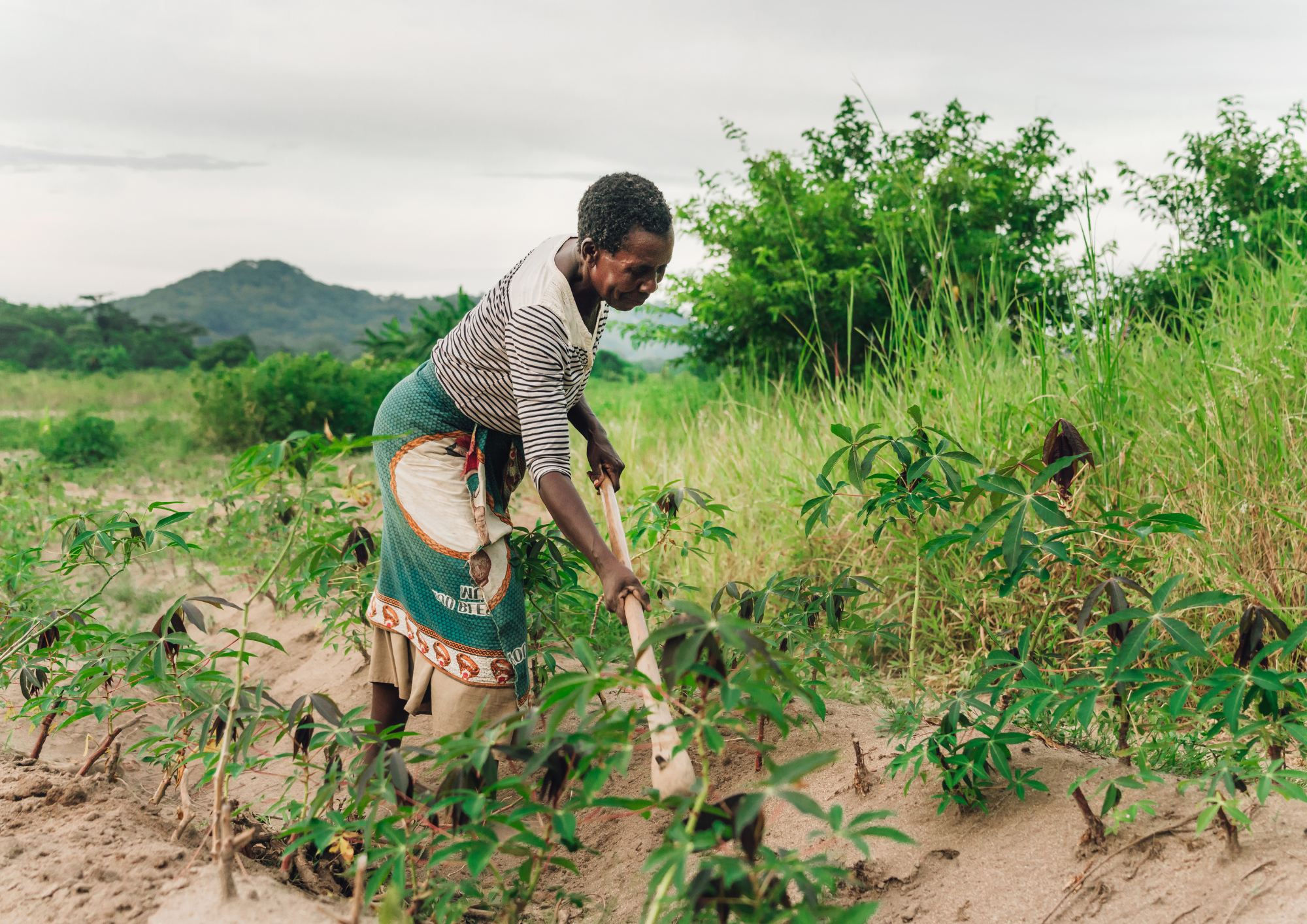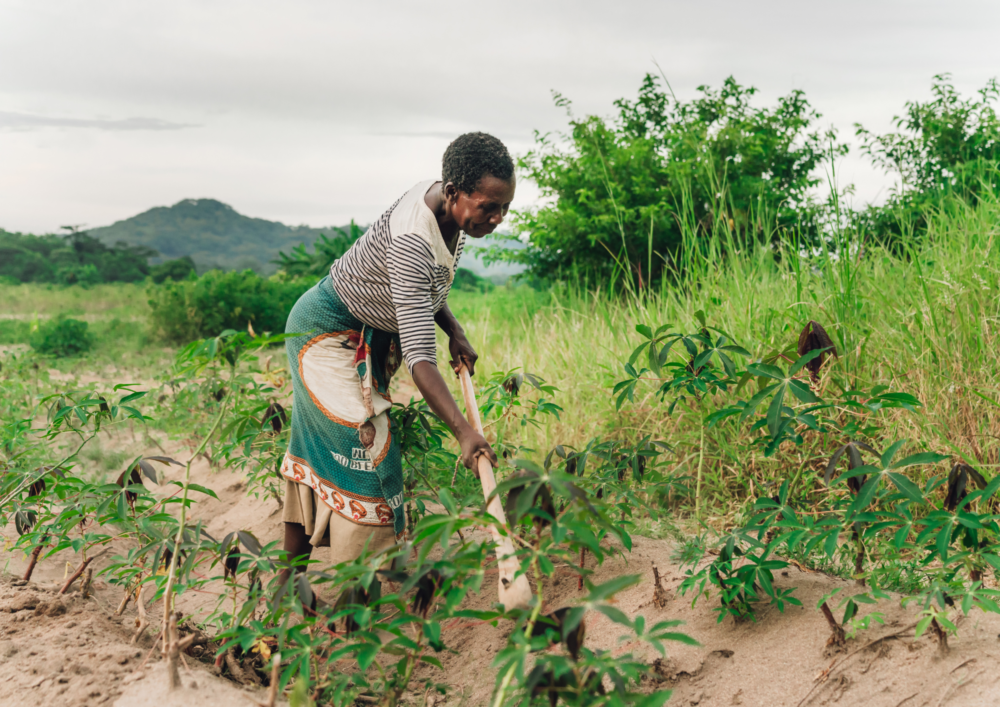Agroforestry Innovation and Collaboration between the UK and Africa - Event round up

In November 2022, we brought together stakeholders from the UK and Africa to explore agroforestry innovation. The online event also encouraged collaboration to increase the adoption and success of agroforestry.
Agroforestry is about integrating trees and shrubs into agricultural land. It offers many benefits including sequestering carbon, enhancing biodiversity, improving degraded soils and decreasing soil erosion, while helping feed growing populations. Agroforestry can be an effective way to mitigate climate change.
The speakers talked about the current state of agroforestry, its benefits, the challenges and opportunities it brings, and innovative projects in the sector, which this article summarises.
The current status of agroforestry
Market driven growth in agroforestry
The yield and value of major African tree products more than doubled and tripled respectively between 1999 and 2018. These products were worth around $194 billion in 2018, with 85% coming from just five crops: cocoa, coffee, rubber, oil and soy.
The growing global economy and increasing demand for tropical fruit tree products presents significant potential to build global markets for agroforestry products, both domestically and for export.
Agroforestry can have a big impact in specific value chains, including the export and production value of coffee and cocoa from Africa, which have both increased in recent years.
Moving away from mono-cropping to shaded agroforestry, coffee and cocoa systems could increase productivity.
Hear more from Elaine Springgay (FAO)
Initiatives and policies to boost agroforestry adoption
There are many initiatives promoting the use of agroforestry at global, national, regional and farm level.
Examples in Africa include the Malawi Agroforestry Food Security Programme, the expansion of agroforests in Niger through Assisted Natural Regeneration (ANR) and the Rwanda National Biodiversity Strategy and Action Plan.
Despite some successes, more needs to be done to make agroforestry a more mainstream practice. One way to support this is to integrate agroforestry into government policies and create incentives for people to adopt it.
The benefits of agroforestry
Increase on-farm productivity
→ Fodder trees
Tree foliage grown in agroforestry systems can be used as food for livestock. Researchers at World Agroforestry (ICRAF) are studying how different tree species can impact livestock productivity. Trees used for fodder need to be resistant to pests and able to handle regular pruning. Planting different species together (intercropping) can also provide more nutrition for livestock. For example, Napier grass can be grown alongside fodder trees and is a good source of protein to increase milk production and improve on-farm biodiversity and soil quality. Despite the benefits of using trees as fodder, adoption of these approaches has been limited.
→ Fertiliser trees
Fertiliser trees are nitrogen-fixing leguminous species which increase the availability of soil nitrogen for crops. They are planted close together and harvested after 1-3 years, before other crops are planted. These trees can be intercropped (i.e cereal-leguminous trees) or planted as hedgerows or alleys. Evidence shows that use of fertiliser trees can increase maize yields from 1 tonne per hectare to 2 or more. Fertiliser trees also provide firewood, help control weeds, improve soil health, and save farmers money.
Improve nutrition
Africa has many indigenous fruit tree species (IFT) that aren’t well known in the global markets. IFT are important for food nutrition security and income generation. A number of indigenous fruit trees are undergoing domestication (the process selectively breeding tree species for desirable traits). ICRAF and its National Partners working on indigenous fruit trees asked farmers in Cameroon, Kenya, Malawi and many other countries in Africa which fruit trees they want to grow on their farm. They then selected 10 priority fruit trees to promote, including native and non-native fruit trees.
Participatory indigenous fruit tree domestication has been ongoing for 20 years. This process involves collecting and preserving the genetic material (germplasm) of the tree varieties, selecting the best-performing individuals, and using vegetative propagation methods to reproduce those plants. Farmers are taught how to handle germplasm, and then encouraged to use these skills to grow fruit trees that are already in their landscape.
Many of the exotic fruit tree cultivars now grown by African smallholders come from old varieties. However, these don’t perform as well as modern cultivars. For example, the mangoes grown in Kenya have a lot of fibres and are not what people like to eat today. Breeding is expensive and takes a long time so organisations are bringing in improved cultivars from other places. They are then assessed to see whether they adapt well to different ecological zones.
Increase carbon sequestration
A recent meta-analysis on measurements of above ground carbon density showed that planting trees on farms has huge potential to increase carbon stored above and below ground. In Northern Europe, climate change mitigation is one of the drivers for increasing agroforestry.
It’s quite straightforward to monitor and measure how much carbon is stored above ground, but this is more challenging with soil carbon sequestration. Another meta-analysis investigating temperate agroforestry systems (i.e. alley cropping systems vs. hedgerow vs. silvo-pastoral systems) did not identify clear directions or patterns in terms of sequestration rates. There is some evidence of a slight increase in soil carbon sequestration. However, it’s unclear which agroforestry practices best increase soil carbon storage in temperate systems. This could be because there aren’t enough studies that compare different ways of measuring carbon in the soil.
When it comes to Net Zero, agroforestry’s potential to reduce emissions of non-CO2 greenhouse gases have been overlooked. In intercropping experiments in Germany, nitrous oxide emissions from the land were significantly reduced compared to conventional farming. This was attributed to using less fertiliser, resulting in lower nitrous oxide emissions.
Challenges
One speaker explored the significant costs that can arise for farmers in Tanzania and beyond.
Insect pests make use of natural habitats and little is understood about how the trees being planted influence these.
Large wildlife is a problem for growers in Tanzania. Elephants and other large animals come from the forest, use trees in the landscape as travelling tools and often raid crops, which can cost farmers a lot of money. The European equivalent is browsing by deer.
Risks of disease can also increase if you have wildlife coming into contact with livestock through fleas, ticks or other vectors.
There is a lack of knowledge about crop and wood competition, and growing trees on your farm means there is less land to grow crops.
Emerging opportunities
The following opportunities were discussed during the event:
- Diversification of tree species, especially for fodder.
- Linking farmers to markets.
- Better harvest and post-harvest techniques to improve product quality based on market requirements.
- Improving storage facilities to allow sales to be scheduled to avoid market gluts.
- Strengthened farmer producer groups to allow direct negotiation with wholesalers.
- Introducing market information and credit for the farmers.
- Training farmers on propagation skills.
- On farm management processing to help reduce post-harvest losses.
- Providing access to improved germplasm.
- Exploring innovative extension approaches.
- Effective third party monitoring and verification of carbon sequestration potential to help farmers access carbon markets and receive fair pay for their contribution.
Agroforestry projects and innovations
A selection of innovators, farmers and foresters shared their agroforestry projects and innovation with attendees.
Forest Foods, Kenya | Sven Verwiel
Forest Foods has a modular agroforestry approach to farming. It integrates crops, forestry, fodder and livestock in small to medium scale farms to simplify the value chain, recreate natural environments, and produce the highest quality food for Africans by Africans.
Thinking Philanthropy, UK | Felicity Jones
Thinking Philanthropy supports organisations including those working in agroforestry and community-led conservation in SSA to develop their strategies, multi-funding and investment.
Destination Livingstone, Zambia | Rosie Mercer
Destination Livingstone was established with a desire to make Livingstone a more attractive and competitive tourist destination. They are looking to offset the rural deforestation associated with charcoal production.
BioComposites Centre, Bangor University, UK | Adam Charlton
The BioComposites Centre is developing a seedling wrap. It’s a biobased film packaging for tree seedlings to support sustainable agroforestry projects including Mount Elgon Tree Growing Enterprise in Uganda.
CONNECTED, University of Bristol, UK | Nina Ockendon-Powell
CONNECTED runs the Community Network for Vector-Borne Plant Viruses which connects agroforestry practitioners with experts in plant health.
Rwathia Agrofarm, Kenya | Joseph Gitigi, Director
Rwathia Agrofarm is embarking on a project to uplift cereal farmers on a 2000 Acres Farm in Nyahururu by introducing them into farming avocado trees and linking them to the export market.
FarmSmarter, UK | Rebecca Cole-Coker
FarmSmarter is empowering smallholder farmers to improve productivity via state-of-the art mobile technology. The FarmSmarter app’s mission is to improve livelihoods, profitability and climate-smart sustainability of smallholder farmers.
Kipsaina Crane & Wetlands Conservation Group, Kenya | Maurice Wanjala
The Kipsaina Crane & Wetlands Conservation Group has been running successful community-led conservation integrated with alternative livelihoods for 30 years. They are working on innovative projects and have expertise in indigenous trees and intercropping.
Neno Macadamia Trust, Kenya | Andrew Emmott
The Neno Macadamia Trust supports smallholder farmers to adapt to climate change through macadamia agroforestry, enabling income generation, improving nutrition and increasing their resilience.
If you would like to get in touch with any of the speakers who shared their agroforestry projects, get in touch with Cameron Davies.
If you’d like support to fast-track your innovative idea around agroforestry in the UK or Africa, get in touch with Cameron Davies.



